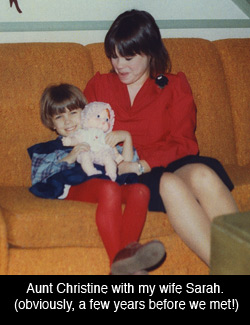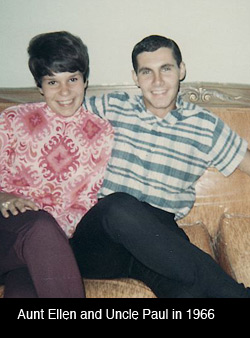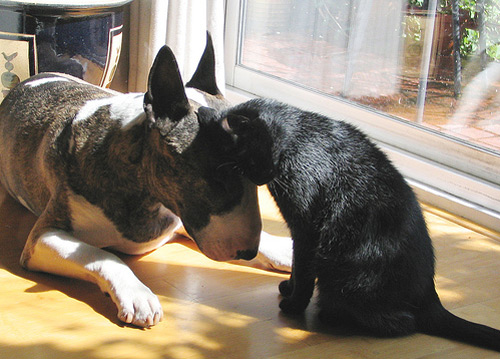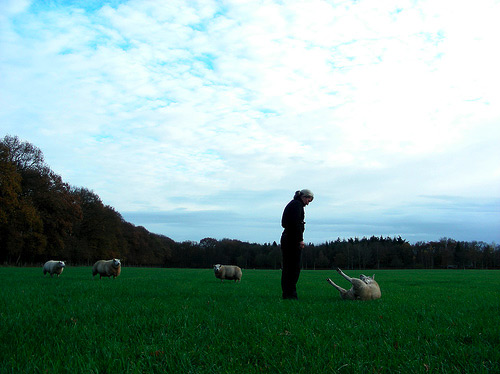“What sad times we live in.” These are the words written to me from an old friend this week. On January 25, she became an aunt. On February 3, the baby passed away.
I know this, because of Facebook.
I know this, because we each made the effort to connect, after years of distance.
I know this, because she shares her joys and sorrows openly to the world.
I know this, because her many friends and family share back.
Through Facebook, we shared in the experience with her. From the excitement of the birth announcement, and many notes of congratulations; to support when things took a turn for the worse; and then the many words of condolence when the baby died. Her friends were able to reach out more easily, and share in each other’s concern for her and her family. These are people spread across a wide geography, and many different aspects of her life.
Unfortunately, her experience of a loved one passing away is not the only one I have shared recently.
 In the past month I have had two very close family members pass away – both suddenly. My wife’s Aunt Christine died on New Year’s morning. She had diabetes, and suffered a heart attack at age 45. It happened in moments and shook our family to the core.
In the past month I have had two very close family members pass away – both suddenly. My wife’s Aunt Christine died on New Year’s morning. She had diabetes, and suffered a heart attack at age 45. It happened in moments and shook our family to the core.
Later in the month, my Uncle Paul had a massive stroke. He was unconscious for 2 weeks, and passed away in a hospice with family by his side. He was 64, lived a healthy lifestyle and had no health condition that would have given warning.
In each of these experiences, I shared the news on Facebook – an act that seemed difficult at the time. Perhaps it was that I did not want to “inflict” sadness on my Facebook friends, or maybe I am simply not used to sharing something so personal in a very public way like that.
When I did add small status updates on the news, I was heartened by the warm wishes and condolences. My world became bigger. My world became brighter.
 And I am amazed. At how close we all are. That sharing something on a social network brings something more than “page views” or “an online business model”… but meaning.
And I am amazed. At how close we all are. That sharing something on a social network brings something more than “page views” or “an online business model”… but meaning.
This is the value of social media – and somewhere in these experiences, is the way forward for publishers, magazines, journalists, media, and so many other industries that are finding it hard to define and reach their audiences as behaviors change and the media landscape shifts. These are brands that are looking to create real relationships, real solutions, and real meaning within their industries.
Like you, I can’t read the news anywhere without headlines of hardships, of fear, of concern. The topics take many forms, but the underlying message is the same: people are in trouble, and they need help.
When I read these things in big media – the details get washed away in blame and scale. Perhaps I am reading about layoffs numbering in the tens of thousands, or the history of personal savings rates in this country, Wall Street bonuses, or the occasional ponzi scheme or two.
But with social media, these faceless stats become real, have deeper meaning, and personal connections.
What’s more: I am empowered to help.
This is where publishers, journalists and businesses need to focus when identifying ways to move their brands online, without trading pennies on the dollar in terms of business value.
So I want to look at a few ways that businesses can transition from focusing on “content” to focusing on “connection.” Because in these connections – unique value is created. In these connections – people find solutions. In these connections – our worlds expand and are filled with people who can help. In these connections – our lives have meaning.
There are so many different social media platforms, it can be difficult to know where to begin. Here are a few that I recommend you start with when considering expanding you or your brand’s presence online:
- Blogs, comments & forums. This may include feed readers such as Google Reader
- Flickr – a photo sharing service
- YouTube
- Friendfeed
- StumbleUpon, Delicious, and Digg: Social bookmarking services
Let’s take a look at a few ways you can use social media as a two-way communication channel to help your industry and increase the value of your brand:
- Sharing Experience, As It Happens

- For magazine brands active on Twitter, I am seeing them use it to break news before they even have a chance to write a full article. This engages readers, and starts conversations as you develop a full article. Perhaps you will receive questions or even shared links to other resources on the topic.
It’s amazing how well Twitter gives you instant updates on what is happening.
Earlier in the week I was attempting to purchase Bruce Springsteen tickets on Ticketmaster’s website, when I kept getting errors. I did a quick keyword search on Twitter, simply using the term “ticketmaster.”
Instantly, I learned that many other people were having this problem. A full day later I saw an article on CNN.com about the problems that people experienced while purchasing Springsteen tickets through Ticketmaster. (I did end up with tickets in the end!)
Likewise, you can track specific events on Twitter in the same manner or follow people’s updates on Facebook if you know they will be at an event.
It’s also a great way to share in someone’s vacation, living vicariously through their updates on the day’s activities, or lack thereof. Hey, we have to find some way to make February more exciting!
- I had lunch with Publishers Weekly blogger Barbara Vey this week, and while we were waiting for a table, I showed her how to take a photo from her iPhone, and then share a link to it via Twitter. She loved the idea, and immediately started using it in her coverage at ComiCon here in New York. Check out her feed. She shares photos of every author and industry notable that she meets.
Response from her community has been immediate and overwhelming. They have been telling her that it brings them so much closer to her and to the event than just text updates. She is getting twice as many replies on the photo updates than she did from text updates.
- As more people begin using tools like Twitter, you and the rest of your industry will be able to track the happenings by following a wide range of people, instead of relying on a single source.
As much as you share your experience, there is so much to be learned by watching who else is sharing the same event. Deeper connections are made when you inform your audience of great content other people are sharing.
Suddenly, the audience is involved and choosing from the variety of voices that speaks best to them. For an editor at a magazine brand, the goal is to ensure that you are connecting them with the best content, the best people, and the most interesting things happening. - I have come to believe that you find more connections when you over-share. Before you can filter or edit or censor – when you reach for that “publish” button quickly and often. You might be amazed at what you share and at the varied responses you will receive.
Responding to others in your network has the same effect. Don’t just follow people on social networks – interact with them.
- For magazine brands active on Twitter, I am seeing them use it to break news before they even have a chance to write a full article. This engages readers, and starts conversations as you develop a full article. Perhaps you will receive questions or even shared links to other resources on the topic.
- Spreading & Collecting Information

- For a publisher, you learn quickly that sharing links is a great way to expose your network to your content. But you have to expand beyond your own wares.
Share links to content while you are doing research, or on related articles to stories you cover. Anything that would interest your followers will be appreciated. There are even tools to track which of your links get clicked on most often, so you can gauge what type of content people are interested in.
- As you follow and friend more people, you will also be exposed to many links that they share. This is valuable information coming from trusted sources. I can’t tell you how many articles I discover each week through those I follow on Twitter.
- Social bookmarking services like StumbleUpon, Digg, and Delicious are also ways to discover information that is relevant to your core audience.
- As you read blogs – don’t be shy about commenting and adding valuable information that the author would appreciate. This is not about dumping information on someone, but creating a relationship. If all goes well, you will become advocates for each other.
- On sites like YouTube and Flickr, as you find people in your network who use these services, you can subscribe to their feeds, and be alerted to new content they add.
It’s always interesting to find someone whose ideas you respect on their blog, and then see what they post on Twitter and Flickr and YouTube and Facebook. You get a sense of a full person, and often find other things that you have in common.
- For a publisher, you learn quickly that sharing links is a great way to expose your network to your content. But you have to expand beyond your own wares.
- Brainstorming Ideas

- One editor at RBI was perparing to speak to a large company, and sent out a simple question to 90 people in his Facebook network. He asked for their opinions on the company’s products.
Within 6 hours, 80 people responded back, with tons of interesting information and questions.
- Social networks are amazing discovery tools. It is so easy to find common interests and experiences that you would never have thought possible, simply by friending someone and following their feed.
Likewise, you will be surprised at the feedback you get from the most unlikely posts you share. Perhaps someone else has a vintage apron collection, just like you do!
- Sometimes you may have a basic concept for an article or coverage you are working on, and want to poll your community for ideas. Social networks are a great place to start.
Or perhaps you have no idea what to write on a certain topic. Thinking out loud and asking for feedback will lead you places that will ensure you are meeting the needs of your audience.
- I even have one friend who is collecting ideas baby names through Facebook. My suggestion: Zsa Zsa.
- One editor at RBI was perparing to speak to a large company, and sent out a simple question to 90 people in his Facebook network. He asked for their opinions on the company’s products.
- Listening

- Social media is a great way to listen to your community and identify topics that are primary in their minds. One editor I spoke with used Twitter in preparation for a panel he was speaking on at a conference.
This gets a bit technical, but on Twitter there are things called “hash tags.” Basically, someone, anyone, can determine a hash tag name that people can add to their Tweets that discuss a particular topic. So, if you want to read everyone’s Tweets on Superbowl commercials, perhaps you would create a hash tag like this: #SuperCom09. Then, assuming it catches on, people add that to their Tweets about Superbowl commercials.
Anyhow – the editor identified a hash tag that was very popular and dealt with the topic his panel covered. He listened to what his industry was most concerned about – what topics they were most interested in. This set his agenda when preparing for the conference.
Likewise, you can search on Twitter for particular keywords, and use this to determine your editorial strategy on a specific topic. This might work as an editorial discovery tool, or to help back up a gut feeling you have about which topics are critical to your readers.
Another editor noticed that many folks she follows on Twitter were posting frequently on a particular topic. She used this as a starting point, began asking follow-up questions through Twitter, and ended up using many Tweets as the basis of an article for the publication.
Because social networks make you present in the everyday lives of your industry, you are able to keep your finger on the pulse of their needs. The next step is to find ways to solve these needs – improving their lives – and bringing more value to you and your brand.
- Social media is a great way to listen to your community and identify topics that are primary in their minds. One editor I spoke with used Twitter in preparation for a panel he was speaking on at a conference.
- Lending a Helping Hand

- When you are on Twitter, you are suddenly more accessible to your friends and your industry. I have had a number of editors and bloggers tell me how people will casually use Twitter to ask them a question relating to their coverage, or suggest topics they should focus on.
There is an immediacy and informality to Twitter and other social networks that gives a more personal connection. This tears down that wall between “content creator” and “reader,” in terms of a traditional media structure. Information is shared more fluidly and connections made more often.
Instead of industries being stymied by organizational structures to determine accessibility, being active on social networks allows everyone to connect with one another. The goal here is not to diminish the value of any individual role, but to ensure that each person is able to share their own unique value.
Likewise, one editor told me that she is noticing that readers who click into her blog from Twitter are much more engaged, with dramatically longer “time spent” metrics than readers who come in through other means such as Google.
- You may see requests such as “I need a job” or “I need an accountant” or “what movie should I see?”
This is where social networks become something more than “new media.” This is where you can clearly see the needs of those you care about most, and go out of your way to lend a hand.
When a friend loses their job, I know instantly. And I can help, by asking what kind of jobs they are looking for, and connecting them with people in my network that might be able to assist.
Or perhaps they simply need someone to chat with, to take the overwhelming emotional pressure off during a time of great transition. These are all conversation starters, and I am constantly amazed at where these conversations lead.
- Some requests are professional, but many are mundane and person. I have seen friends ask things like “how to get my baby to sleep though the night?” Suddenly, they receive tons of advice from the many mothers and fathers in their network. People who care – people who will follow up a week later – people who make your problem seem less isolated and perplexing.
- On communities such as LinkedIn, they have a thriving “answers” section where people post questions and answers on issues they might be experiencing. This is a powerful way to lend a helping hand and market your brand by illustrating not just depth of knowledge, but personal connection.
- When you are on Twitter, you are suddenly more accessible to your friends and your industry. I have had a number of editors and bloggers tell me how people will casually use Twitter to ask them a question relating to their coverage, or suggest topics they should focus on.
(thanks so much to Josh Hadro, Kathy Ishizuka, Brian Kenney, Barbara Vey, Susan Dickenson and the many others who shared their experiences with me.)
One of my next projects is to understand the “return-on-investment” of using these tools. As you may know, I am a huge fan of research and analytics, and using these tools to ensure that we are spending our time on things that truly matter to our industries. More to come on that.
The overall point is that we need to move away from a broadcast media mentality, and focus on engaging communities around topics that are compelling to them. Within B2B media, these are inherently things that solve problems and add meaning to people’s lives. Helping in this manner elevates the business value of you and your brand.
And this is why I am so taken with social media. Not because its trendy, not because it scales so well, not because it is so easy.
I love social media because it helps people; It puts smiles on their faces, and some warmth in their hearts during times of need.

Dan, I just love everything about this post!
Thank you!